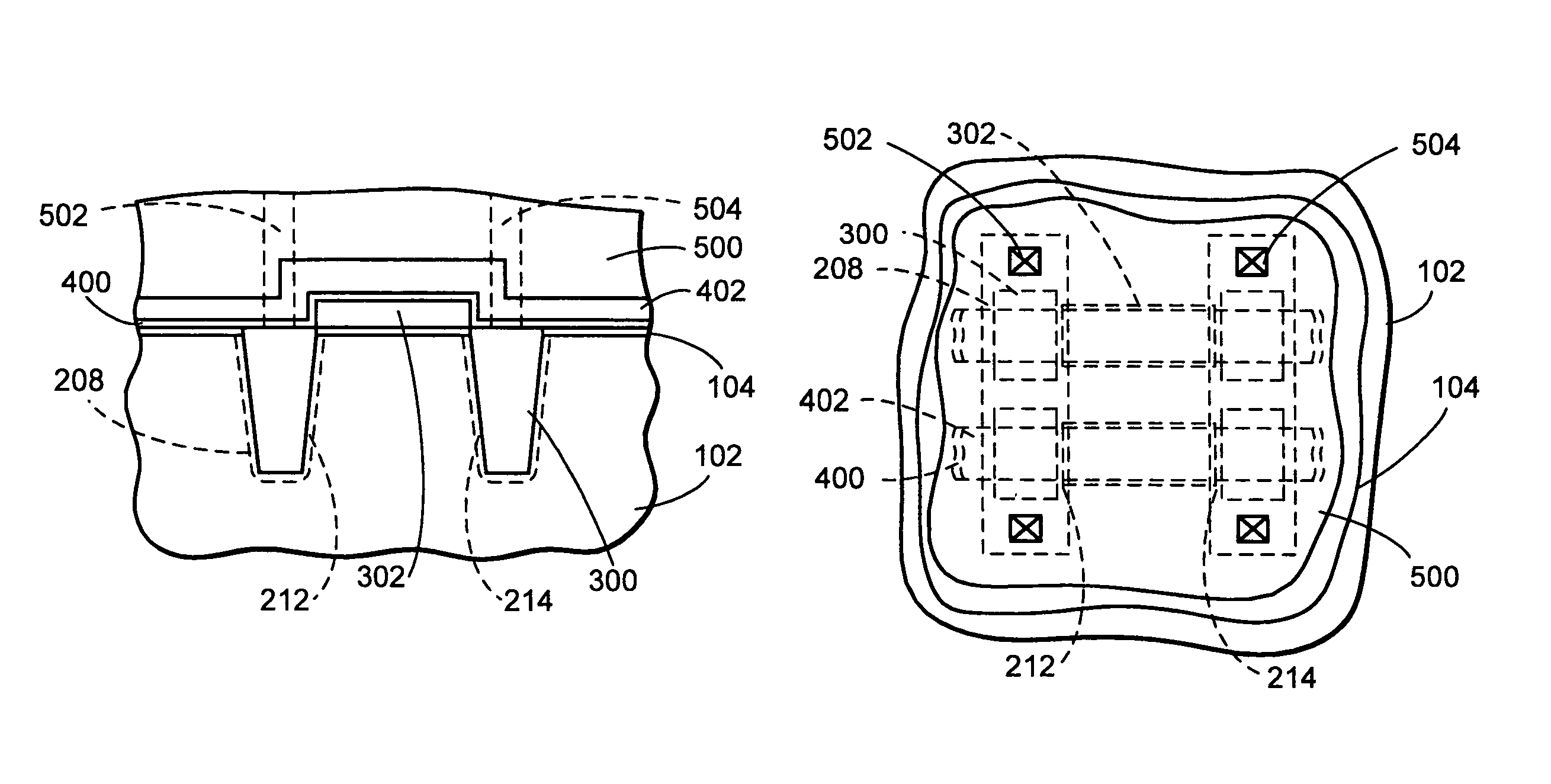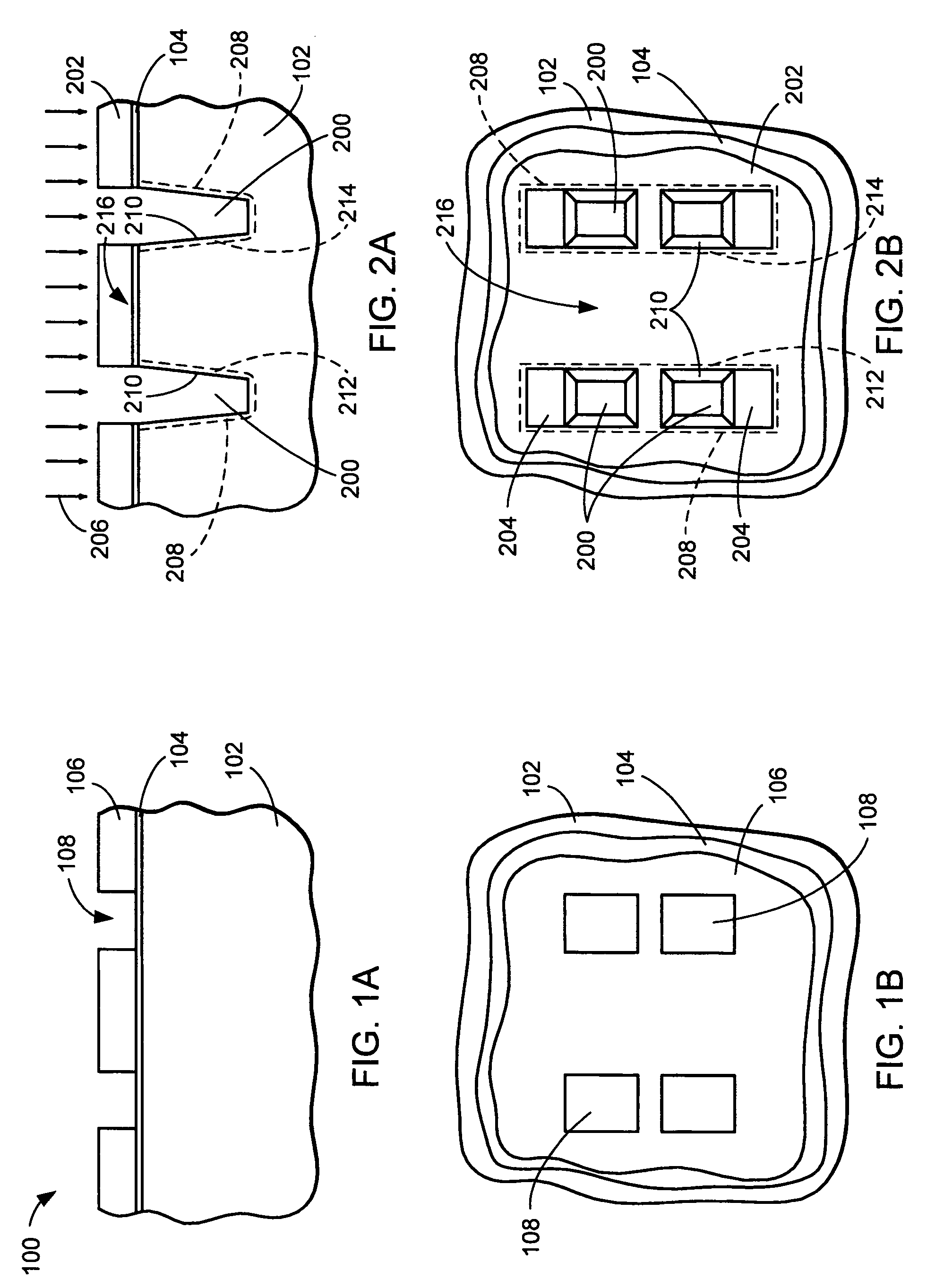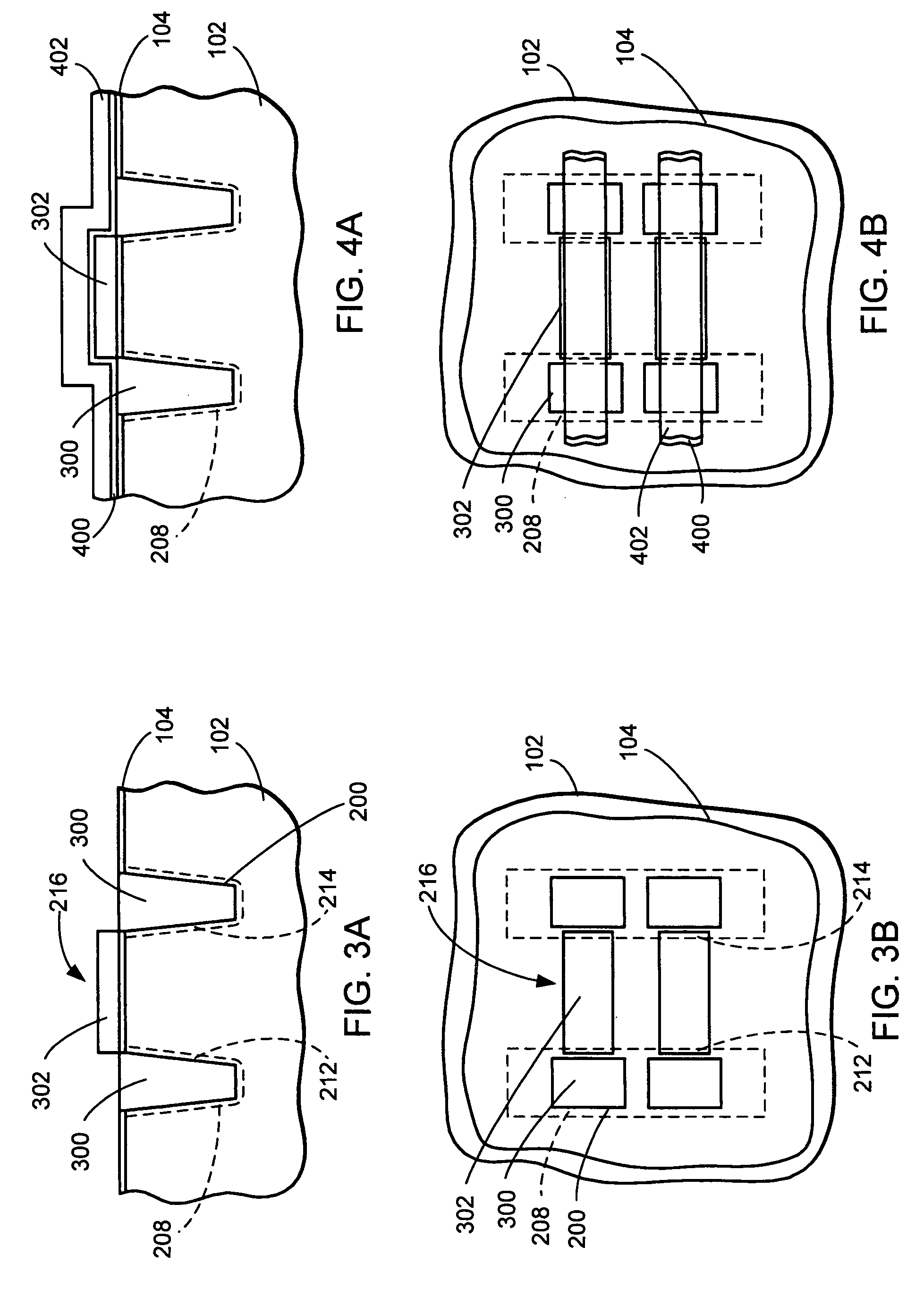Non-volatile memory manufacturing method using STI trench implantation
a manufacturing method and non-volatile memory technology, applied in the direction of semiconductor devices, electrical apparatus, transistors, etc., can solve the problems of non-functional areas, challenge the limitations of conventional semiconductor technology, and reduce design features, so as to reduce device size and compact dimensions
- Summary
- Abstract
- Description
- Claims
- Application Information
AI Technical Summary
Benefits of technology
Problems solved by technology
Method used
Image
Examples
Embodiment Construction
[0024]The term “horizontal” as used herein is defined as a plane parallel to the conventional plane or surface of a silicon wafer, regardless of its orientation. The term “vertical” refers to a direction perpendicular to the horizontal as just defined. Terms, such as “on”, “above”, “below”, “bottom”, “top”, “side” (as in “sidewall”), “higher”, “lower”, “over”, and “under”, are defined with respect to the horizontal plane.
[0025]The term “processing” as used herein includes deposition of material or photoresist, patterning, exposure, development, etching, cleaning, and / or removal of the material or photoresist as required in forming a described structure.
[0026]Typical prior art methods for fabricating non-volatile memory cells employ shallow trench isolations (“STI”s) to define the device active area. The defining element of the non-volatile memory cell is the presence of a floating gate. A very thin tunneling oxide layer overlies the semiconductor substrate. The floating gate is form...
PUM
 Login to View More
Login to View More Abstract
Description
Claims
Application Information
 Login to View More
Login to View More - R&D
- Intellectual Property
- Life Sciences
- Materials
- Tech Scout
- Unparalleled Data Quality
- Higher Quality Content
- 60% Fewer Hallucinations
Browse by: Latest US Patents, China's latest patents, Technical Efficacy Thesaurus, Application Domain, Technology Topic, Popular Technical Reports.
© 2025 PatSnap. All rights reserved.Legal|Privacy policy|Modern Slavery Act Transparency Statement|Sitemap|About US| Contact US: help@patsnap.com



